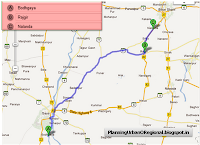Please visit my web page "Urban Tenets" at https://urbantenets.nl/
************************************************
CONSUMER GOODS AND APPLIANCES –Circular practices in this sector include modular DIY replaceable components, industry-wide standardization, circular business model, shared economy (manufacturer/ supplier as product owner), new sharing platforms (including yet to be widely adopted by e-commerce giants), mainstreaming refurbished items, process heat recovery, community repair supported by diluted repair/ warranty contracts, creation of neighbourhood community repair centres and of course minimising packaging waste.
Additionally, what may be required in terms of achieving circularity in the appliance segment is to have a clear business plan and commitment from the manufacturing industry for the second and third life of the product; open learning platform for DIY community repairs, integrating basic DIY and vocational training in school and university curriculum, recognition of second, third and fourth life products as formal subcategories under each (applicable) product code in the national and EXIM industrial product code database among others.
ARCHITECTURE AND INTERIOR DESIGN – Here CE may include statutory mandate for circular procurement of material and finishes, compulsory fixed percentage use of bio-based material, harvested and localised materials in all building categories (budget to luxury), incentives (percentage slabs) to encourage refurbished/ upcycled finishing and furnishing, process heat capture mechanism, modularity in the built environment to minimize residual waste products and better end of life usage, new business models including new partnerships, emerging roles and new skill sets.
Additionally, what may be required in achieving circularity in architecture and interior design is to have a community material bank for storing harvested components from neighbourhood renovation projects with the provision of material passport, neighbourhood material donation/ exchange bank, also eventually eliminating construction and demolition waste altogether from the waste stream, the establishment of national/ regional material R&D and material innovation centres specifically focusing on second/ third/ fourth life composite construction, finish and furnishing materials and products among others.
Author: Anoop Jha
[Recent update
Starting 2024, launching urban management, interior design, home decor and commissioned artwork services in the Netherlands, serving local as well as international remote clients.
Please Note, that I am also conducting a FREE 45-minute online individual consultation on your interior design and home decor needs and aspirations if you are in the Netherlands or even internationally. Drop me an email at anoop.jha@gmail.com
Please visit my web page "Urban Tenets" at https://urbantenets.nl/
Instagram interior design page @urbantenets
Instagram fine art and illustration page @urbanoregional
************************************************
#circulareconomy #biobasedmaterial #sharedeconomy #architecture #Industry #industrialpolicy #infrastructure #interiordesign #circulartransition #hague #Rotterdam #Utrecht #Delft #leiden #Netherlands


.jpg)


.jpg)
.jpg)
.jpg)
.jpg)
.jpg)

.jpg)























